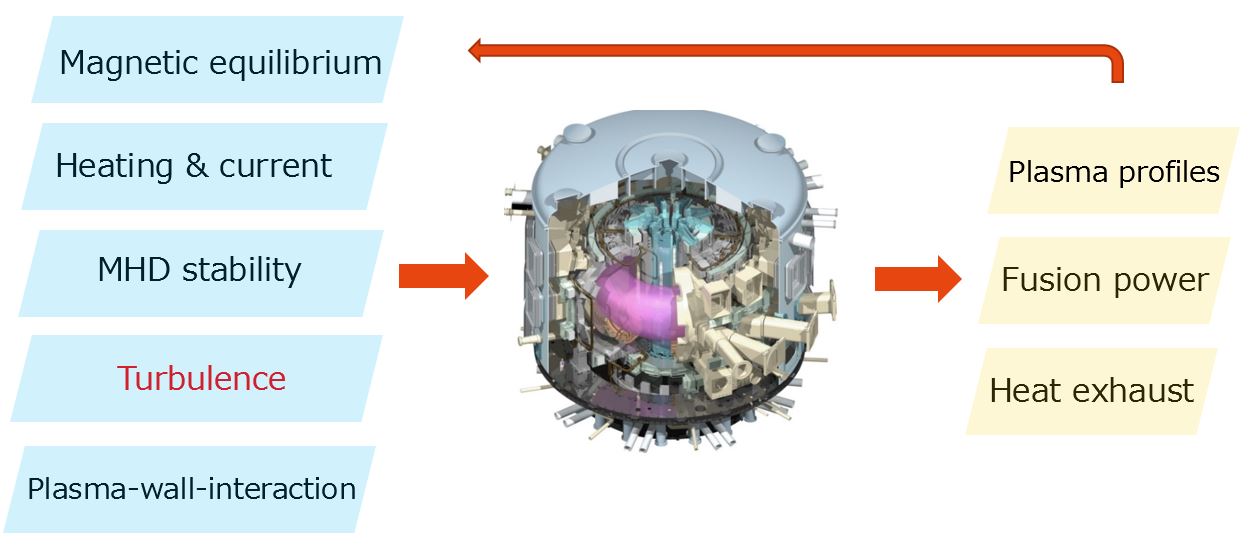Multiple physical sub-systems interact in a tokamak to determin salient parameters such as plasma temperatures, densities, fusion power, and heat exhaust. In turn, these outputs determine the evolving state of the physical system in a self-consistent manner. Simulation of this combined system defines the field of "Integrated Modelling".
Our group focuses on the prediction and control of tokamak transport. This one of the key physical components of the integrated tokamak system, setting the flows of particles, heat, momentum and impurities. The considered transport processes are collisional (neoclassical), large-scale MagnetoHydroDynamic (MHD) instabilities, and turbulent transport (microinstabilities).
A specific emphasis is set on developing the physical understanding and tools necessary for tractable turbulent transport models in such integrated modelling frameworks. Towards this aim, we carry out a number of interlinked projects:
- Integrated tokamak simulation
- Nonlinear turbulence modelling
- Reduced turbulence modelling
- Machine learning for control-oriented models
- Bifurcation models for improved confinement regimes

Our focus is on the transport processes within this system, and turbulent transport in particular

DIFFER is a member of the EUROfusion consortium, which comprises 30 fusion research organisations and universities from 26 European member states plus Switzerland and Ukraine.